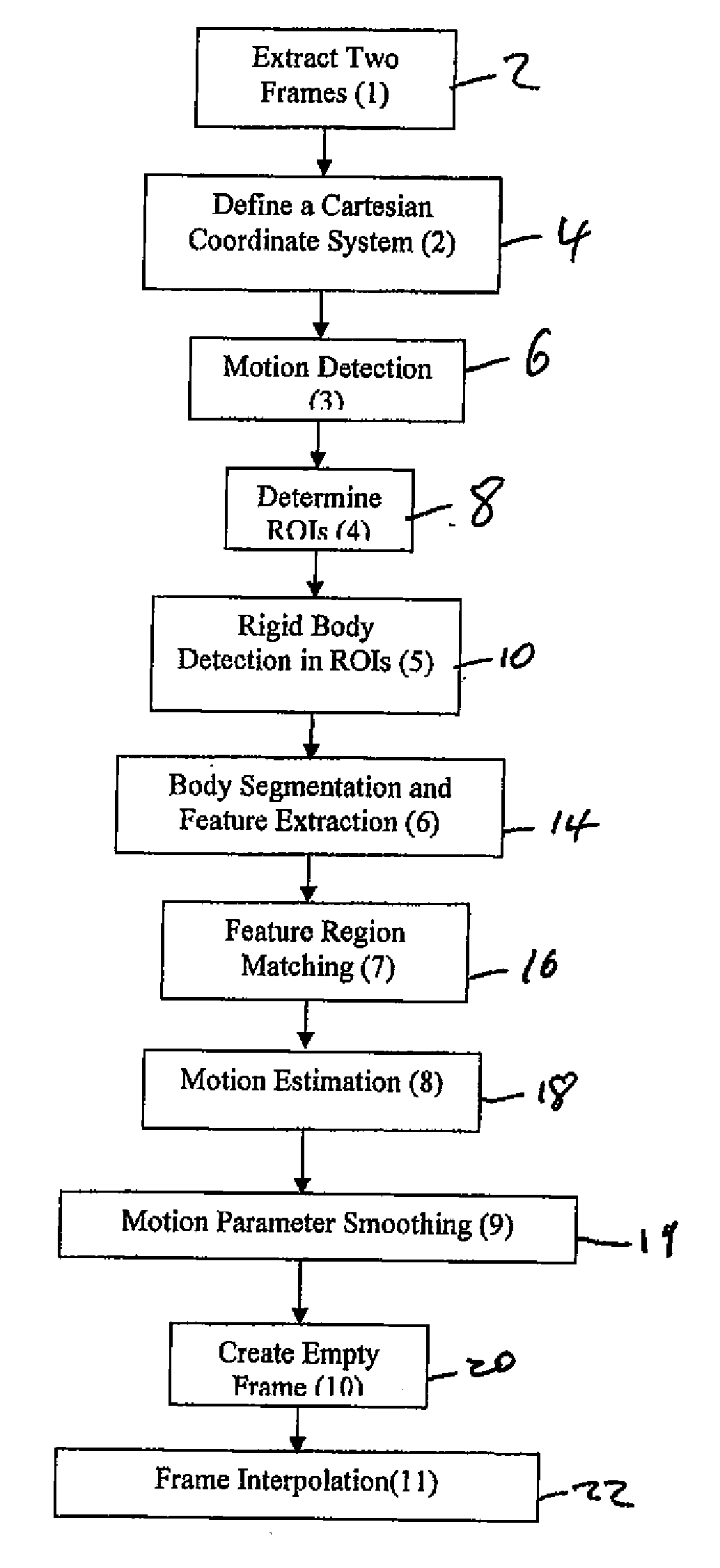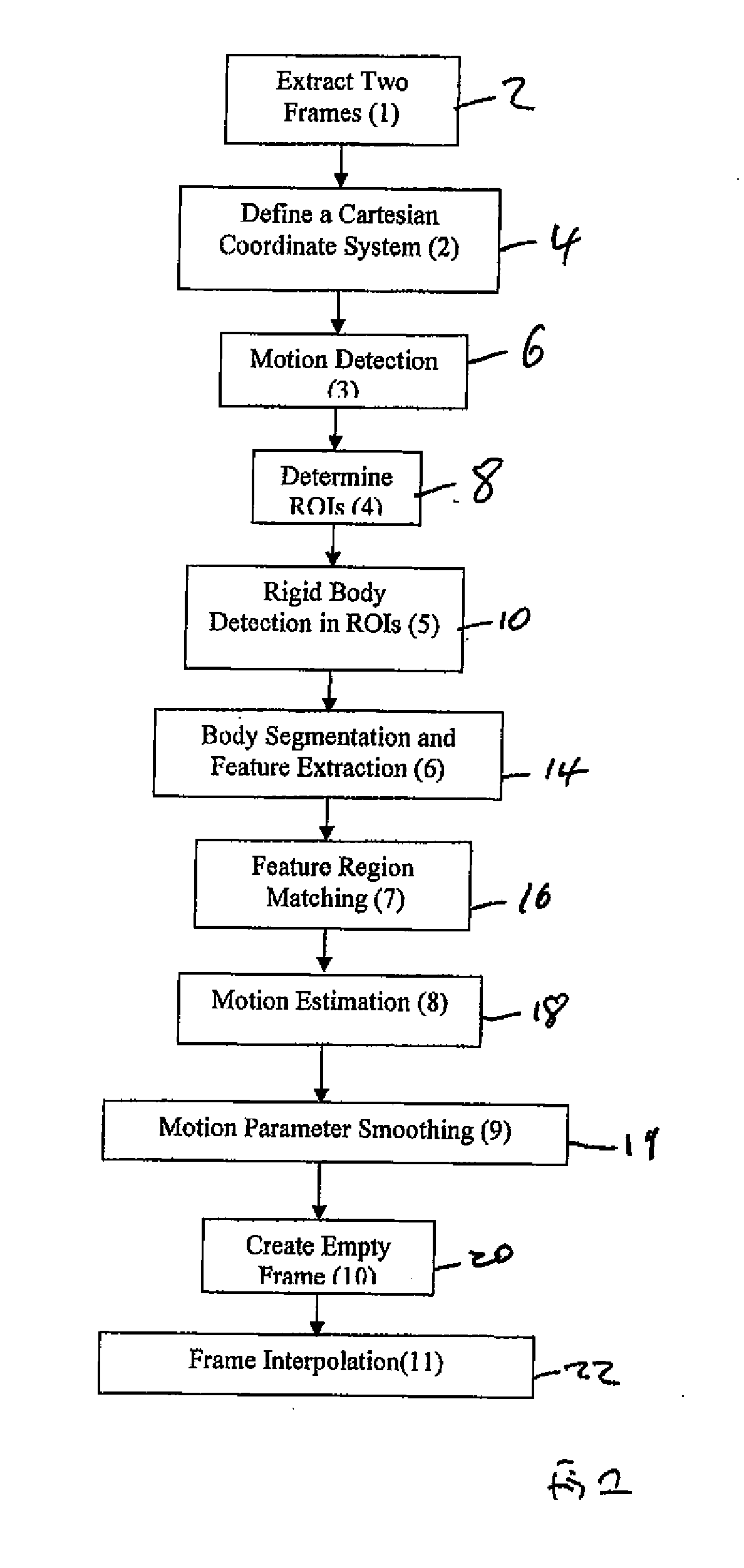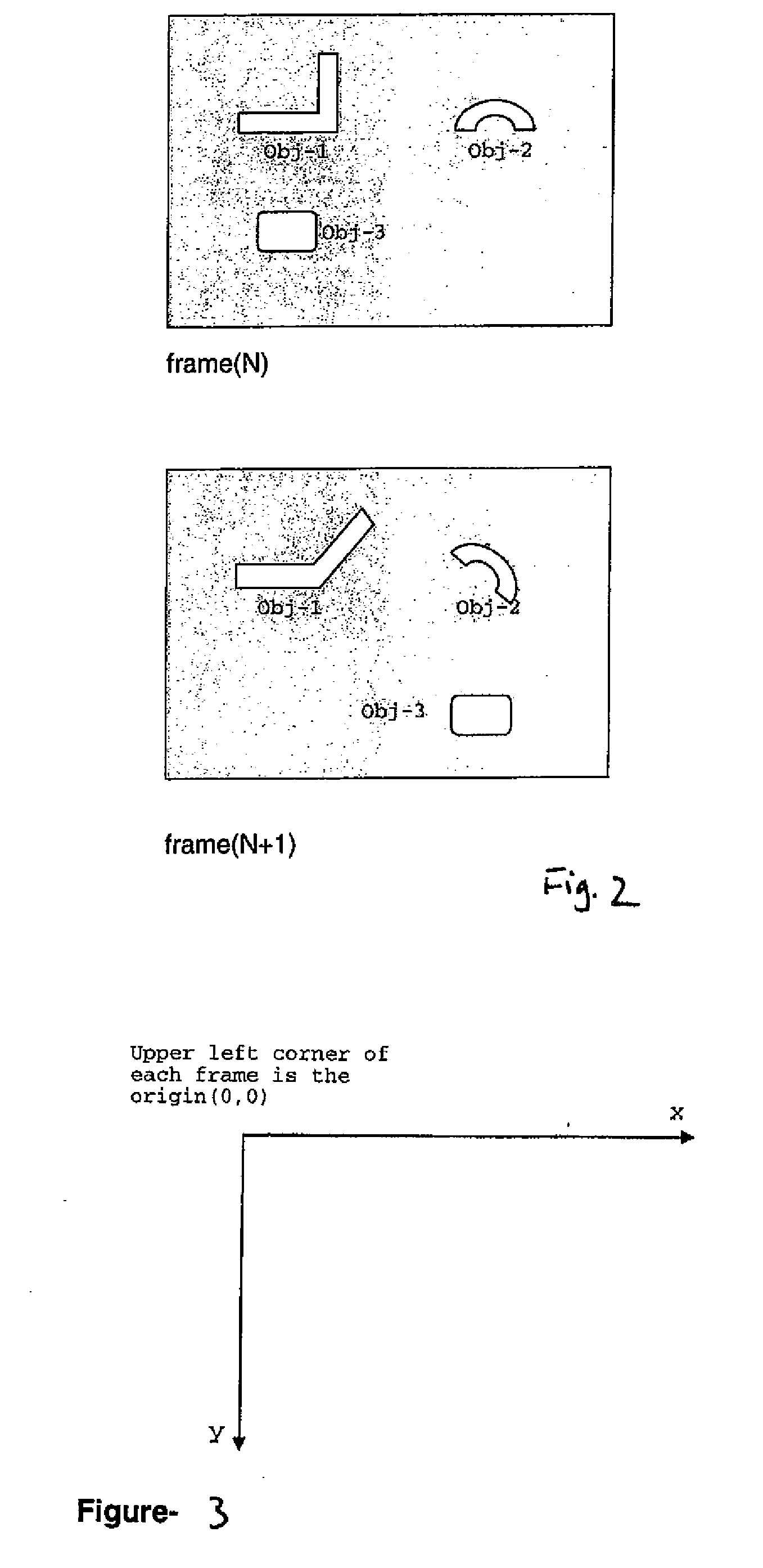Method and apparatus for frame interpolation
a frame interpolation and frame technology, applied in image data processing, television systems, standards conversion, etc., can solve problems such as motion judder, problems in moving areas of displayed, and only 50 frames per second of standard television broadcast transmissions, and achieve the effect of more simple and computationally efficien
- Summary
- Abstract
- Description
- Claims
- Application Information
AI Technical Summary
Benefits of technology
Problems solved by technology
Method used
Image
Examples
Embodiment Construction
[0040]FIG. 1 is a schematic flow diagram of the steps of a method according to a particular embodiment of the present invention. Initially, at step 2, two consecutive frames are extracted from a first video stream to be processed. Next, at step 4, a coordinate system is defined for the extracted frames, such as a Cartesian coordinate system. Next, at steps 6 and 8 moving areas within the consecutive extracted frames are detected and the regions of the extracted frames in which the moving pixels are positioned are identified as regions of interest ROI. At step 10 object detection within the ROIs is performed to identify rigid bodies within the ROIs. A rigid body need not be a singular item with respect to the subject matter of the frame. Rather, it is a system of particles or component parts in which the relative distance between the particles or component parts does not vary.
[0041] At step 14 object segmentation and feature extraction is performed. The detected bodies are segmented...
PUM
 Login to View More
Login to View More Abstract
Description
Claims
Application Information
 Login to View More
Login to View More - R&D
- Intellectual Property
- Life Sciences
- Materials
- Tech Scout
- Unparalleled Data Quality
- Higher Quality Content
- 60% Fewer Hallucinations
Browse by: Latest US Patents, China's latest patents, Technical Efficacy Thesaurus, Application Domain, Technology Topic, Popular Technical Reports.
© 2025 PatSnap. All rights reserved.Legal|Privacy policy|Modern Slavery Act Transparency Statement|Sitemap|About US| Contact US: help@patsnap.com



